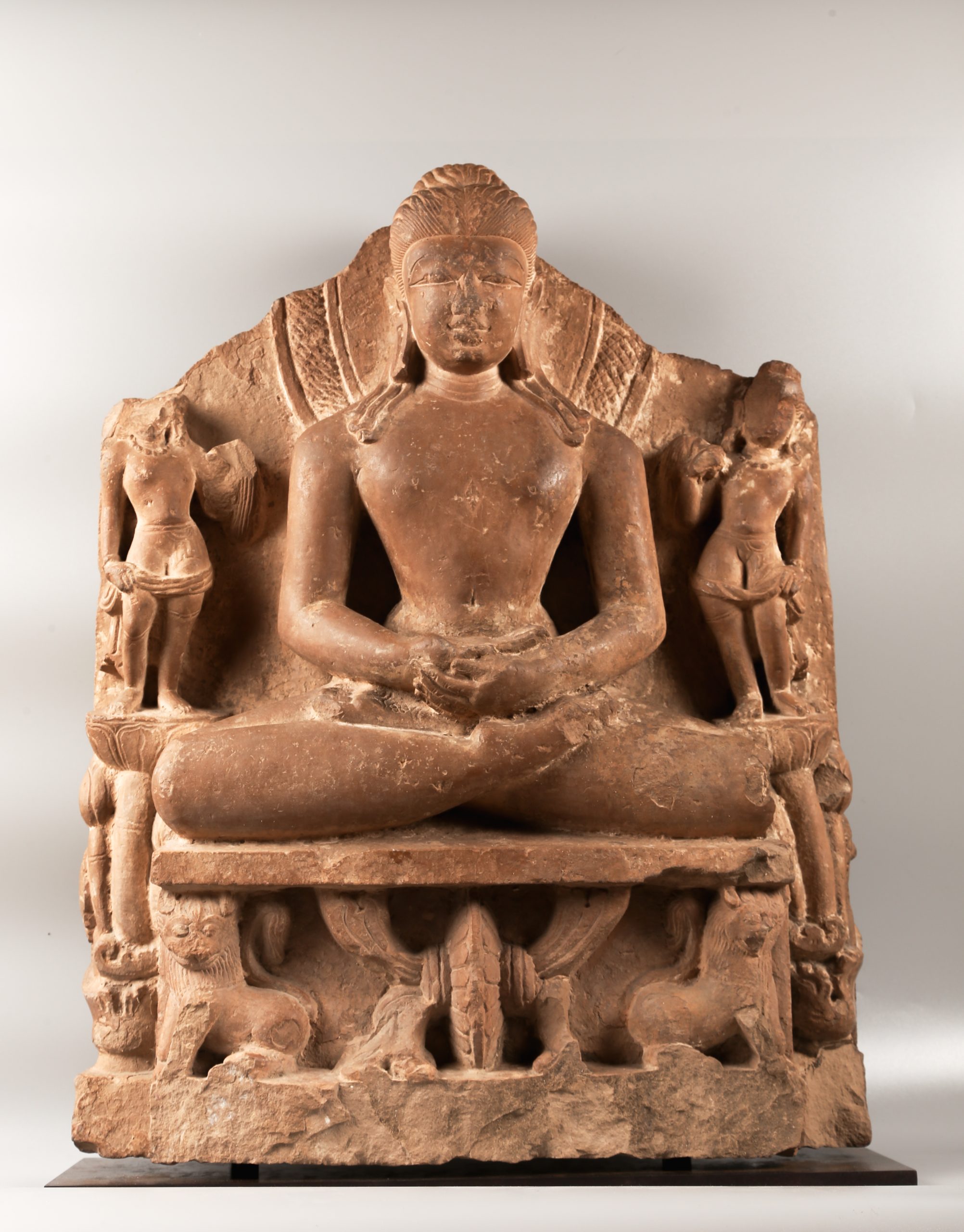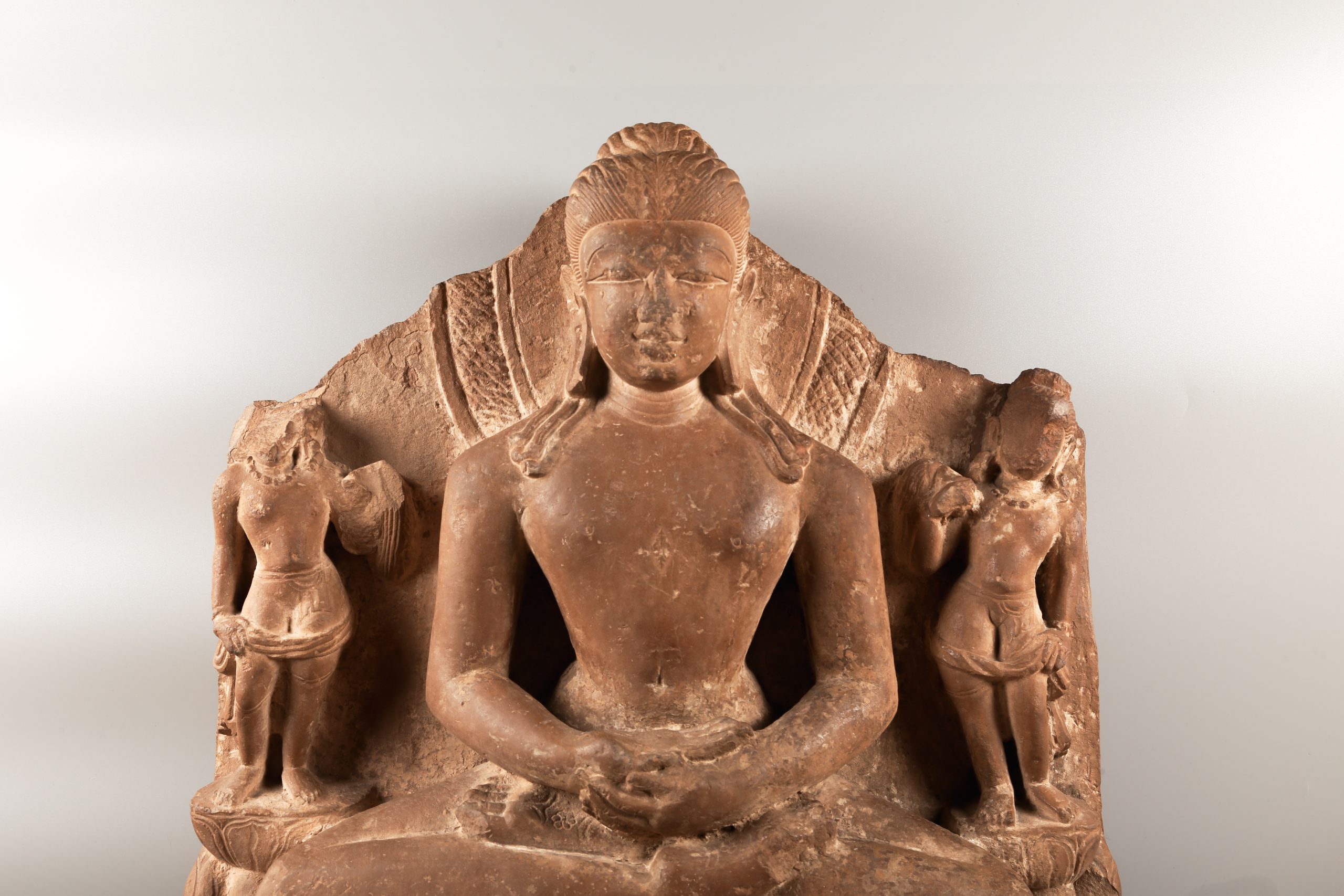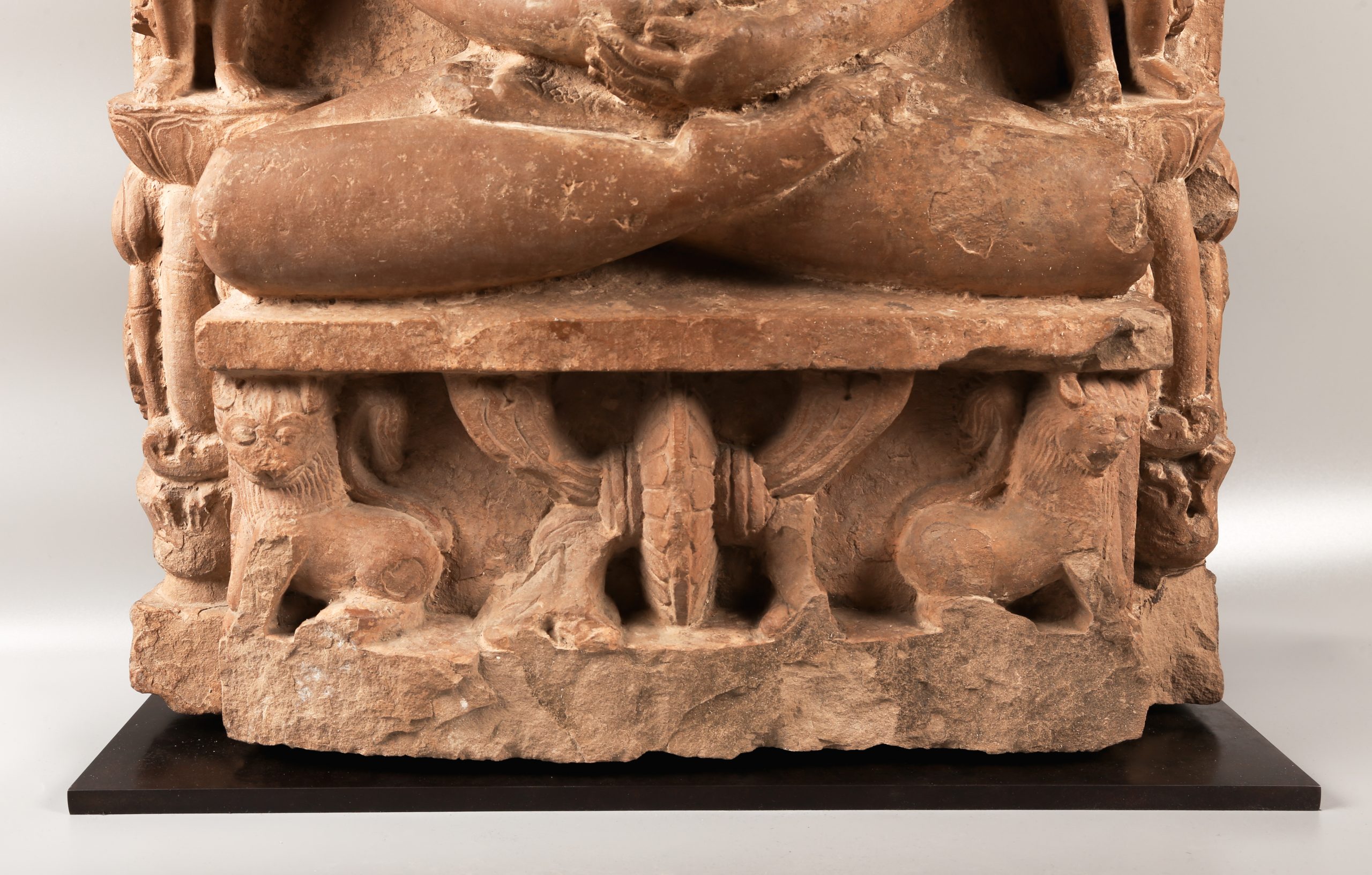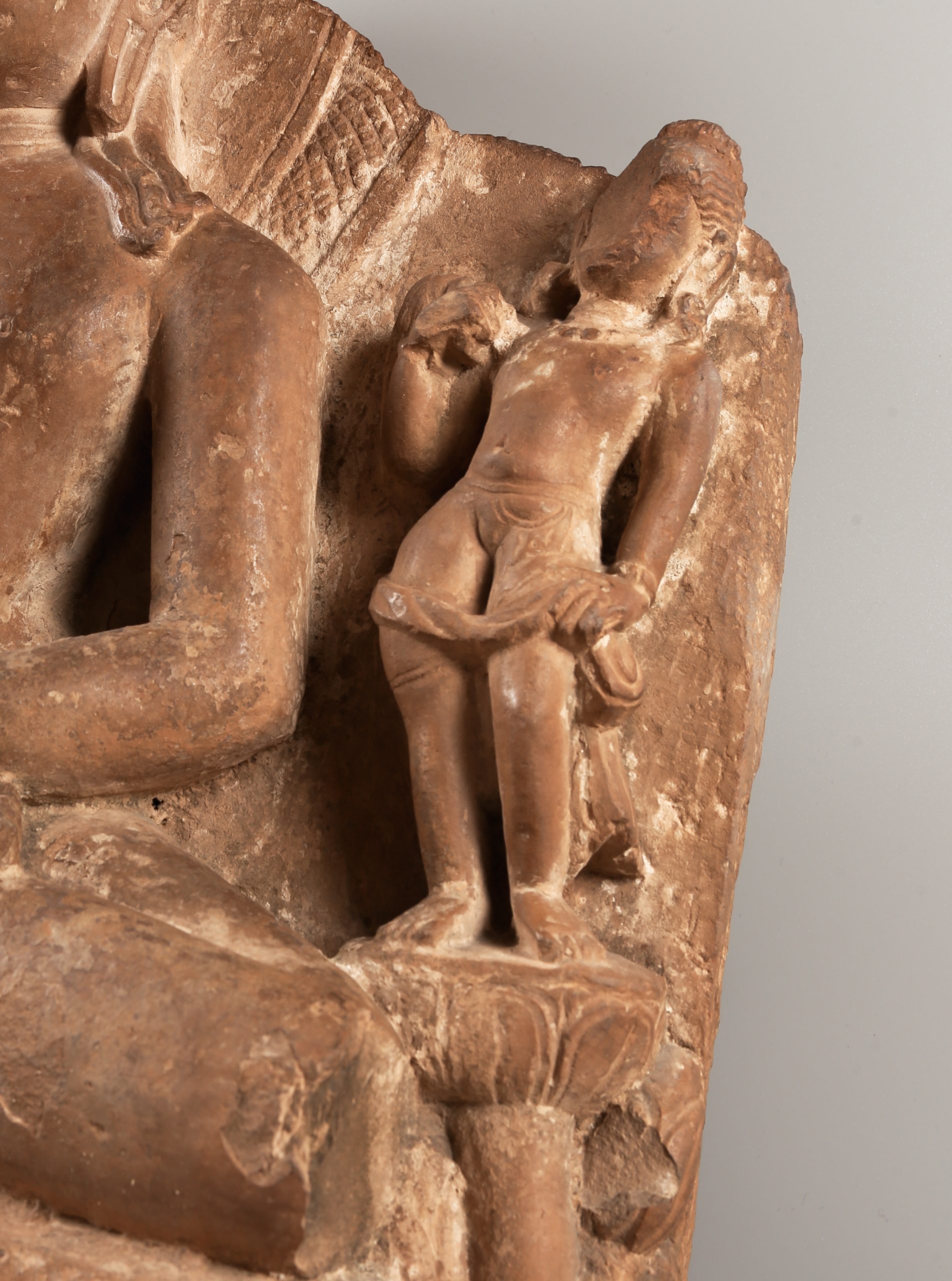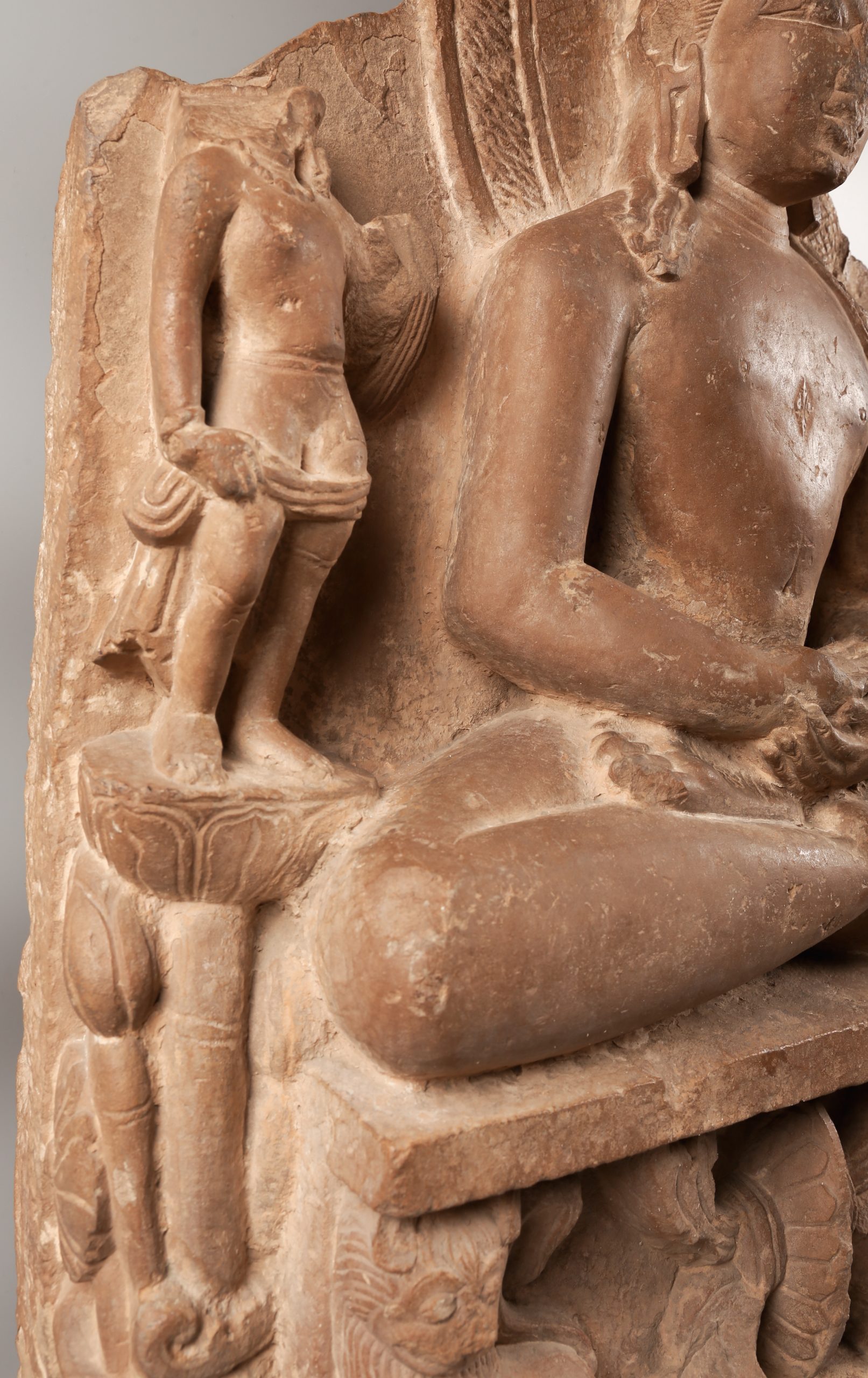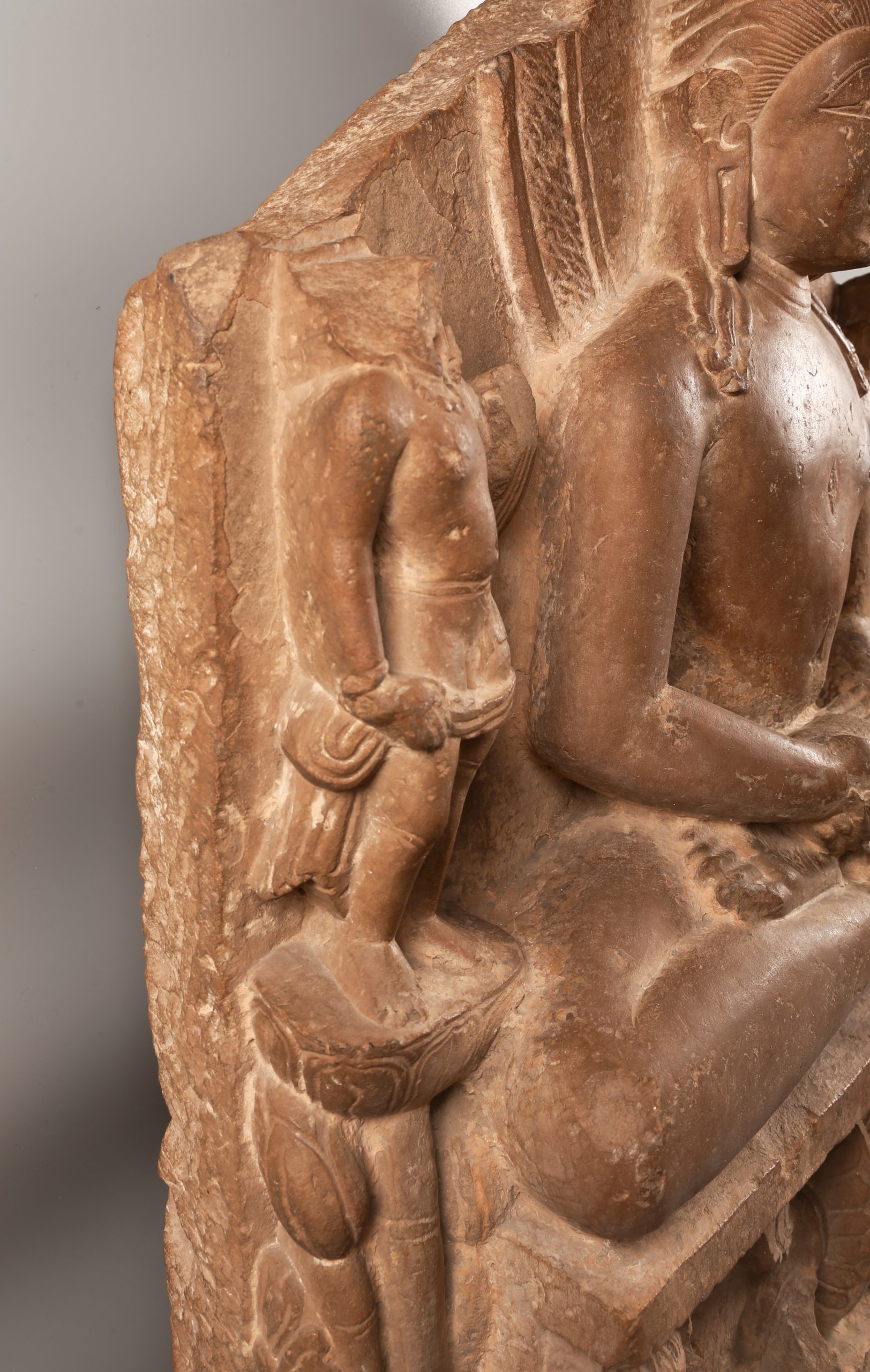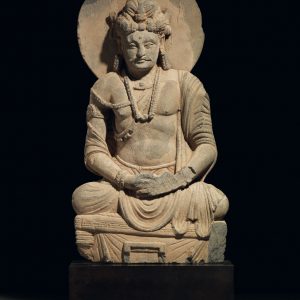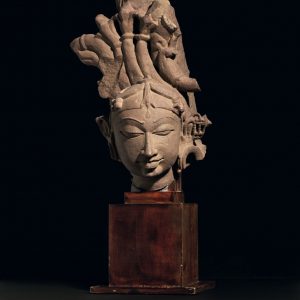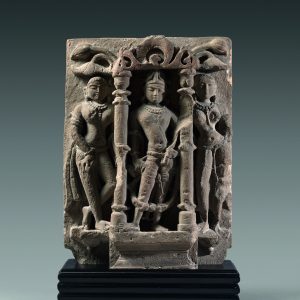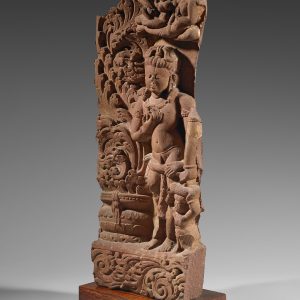Jain stele
Sandstone
India
7th-8th century, post-Gupta period
H. 61,5 cm
Description
This majestic stele depicts a Jina, or Tīrthaṅkara, in a meditative attitude.
He is depicted nude – in accordance with Jain iconographic prerequisites, and he is coiffed with a bun from which strands of hair fall over his shoulders. This characteristic hairstyle corresponds to the codes of representation of the Rishabhanatha jina. His chest is adorned in the center with the endless knot, also called śrīvatsa. The figure is surrounded by two attendants, and is seated on a throne supported by two lions on either side of a wheel of the law – dharmachakra.
His large, wide-set eyes and his fleshy lips sketching a slight smile are all elements that contribute to the impression of serenity that the stele evokes.
The strong geometry and stylization characteristic of Jain works are softened here by the particular care given to the contour lines and the thinness of his eyebrows, which considerably refine the face.
Jainism, an Indian religion that predates Buddhism
Jain shrines contain countless representations of the Tīrthaṅkara, also called Jina, omniscient beings who have escaped the cycle of reincarnations. These extraordinary characters, twenty-four in number, are found throughout the history of the world and are responsible for transmitting the foundations of the Jain doctrine through the centuries. This doctrine predates Buddhism and one of its fundamental principles is non-violence (ahiṃsā), which applies to all creatures.
A religious art that spread throughout India
The work is characteristic of the medieval period in India, and its refinement is quite remarkable. Inspired by the canons of Gupta art, Jain statuary oscillates between profusion of decoration and austere idealization of the portraits. The roundness of the facial features still echoes the great classical aesthetics of the Gupta Empire. It was at this time that the Jain canon was established, borrowing from Buddhist iconography the distinctive marks of sanctity such as the cranial protuberance symbolizing the intelligence of the holy man.
Jain mythology and the role of Rishabhanatha
The first of the twenty-four Jain saviors, Rishabhanatha (also known as Adinatha, “Lord of the Beginning”), is one of the two Jinns who can be identified without any particular attributes, in his case only by his long braids that fall over his shoulders.
Devotees place Rishabhanatha’s origin millions of years ago, at the beginning of our present cosmic cycle, and say that in addition to becoming a Tirthankara, he offered human beings a variety of practical and social skills.

